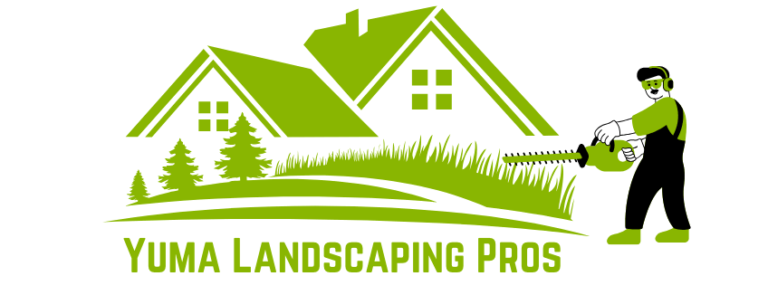In today’s fast-paced world, it’s easy to overlook the importance of tree care. Trees, often seen as just part of the scenery, are vital elements of any landscape. They not only contribute to the aesthetic appeal of your property but also play a crucial role in the health of the environment. Regular tree care is more than just pruning; it’s about ensuring the long-term vitality and safety of your trees and, by extension, your entire landscape. In this article, we’ll explore why consistent tree maintenance is essential for a thriving, healthy outdoor space.
Understanding the Role of Trees in Your Landscape
Before delving into the importance of regular tree care, it’s essential to understand the significant role trees play in the landscape. Trees provide shade, reduce energy costs, improve air quality, and contribute to biodiversity. They are an integral part of the ecosystem, helping to maintain a balanced environment.
- Air Quality Improvement: Trees absorb carbon dioxide and release oxygen. They also trap dust and pollutants, purifying the air and improving the overall quality of the environment.
- Aesthetic Value: A well-maintained tree can enhance the beauty of any property. Their shape, color, and size can dramatically change the appearance of a landscape.
- Wildlife Habitat: Trees provide shelter and food for various species of birds, insects, and mammals. They support a thriving ecosystem by maintaining biodiversity.
- Energy Conservation: Trees can reduce the need for air conditioning by providing shade to buildings and homes. During the summer months, trees are natural air conditioners, keeping the environment cool.
- Stormwater Management: The root systems of trees help absorb rainwater, preventing flooding and reducing soil erosion.
Given their numerous benefits, it’s clear why trees need regular care to ensure they continue performing their roles effectively. Without proper attention, your trees could become unhealthy or unsafe, reducing their ability to enhance the landscape.
Need Service about Landscaping Yuma AZ?
The Importance of Regular Tree Maintenance
Regular tree care involves a combination of actions, including pruning, watering, fertilizing, and disease management. These tasks may seem minor, but they are essential to keeping your trees healthy and thriving. Below are some key reasons why regular tree maintenance is crucial.
Need Service: Tree Service Yuma AZ
Preventing Disease and Pest Infestations
One of the most significant reasons for regular tree care is to prevent diseases and pest infestations. Trees are susceptible to a variety of harmful insects and fungi, which can cause irreparable damage if left unchecked.
- Early Detection: Regular inspection of your trees allows for the early detection of diseases or pests, which can then be addressed before they cause major damage.
- Pest Control: Pests like aphids, scale insects, and borers can destroy the structure of trees if not controlled. Regular care can help prevent these infestations through treatments and preventive measures.
- Fungal Diseases: Certain fungal diseases, like powdery mildew or root rot, can weaken trees. Routine care and timely interventions can minimize these risks.
Ensuring Proper Tree Pruning
Pruning is an essential part of tree care, as it helps maintain tree shape, remove dead branches, and promote healthier growth. Regular pruning also helps in preventing accidents.
- Encouraging Strong Growth: Pruning encourages better airflow, reduces overcrowding, and allows sunlight to reach all parts of the tree. Proper pruning also removes any dead or diseased branches, helping the tree focus its energy on healthy growth.
- Safety: Dead or overgrown branches can become hazards during storms or high winds. Pruning these branches reduces the risk of falling limbs, protecting your property and loved ones.
- Aesthetic Shape: Regular pruning helps maintain the natural shape and beauty of the tree. Properly shaped trees enhance the overall landscape design and make your property more attractive.
- Disease Prevention: Proper pruning techniques can prevent disease from spreading throughout the tree, keeping your landscape healthy and vibrant.
Enhancing Tree Health and Vitality
A healthy tree requires proper care, including adequate water, nutrients, and sunlight. Regular maintenance helps ensure that your trees are well-nourished and free from stress.
- Fertilization: Just like any other plant, trees need nutrients to thrive. Fertilization provides the necessary minerals and vitamins to encourage strong growth.
- Watering: Trees require a consistent supply of water, especially in dry seasons. Regular watering, especially for young trees, helps establish strong roots and prevent dehydration.
- Mulching: Applying mulch around the base of a tree helps retain moisture, regulate temperature, and provide nutrients. It also prevents weed growth that competes with trees for resources.
- Root Care: Healthy roots are the foundation of a strong tree. Regular care ensures that the roots are free from compaction, disease, or damage, providing stability and nourishment to the tree.
Increasing Property Value
Well-maintained trees are not only beneficial to the environment but also increase the value of your property. A well-cared-for landscape makes a positive first impression and can be a key factor in the resale value of your home.
- Curb Appeal: Trees are a major feature of landscaping that add curb appeal to a property. Whether you’re selling or simply enhancing your home’s exterior, healthy trees contribute to a more appealing look.
- Market Value: Studies have shown that homes with mature trees can have an increased property value, sometimes by as much as 10%. A beautiful, well-maintained landscape can set your home apart from others on the market.
The Risks of Neglecting Tree Care
While trees can survive with minimal attention, neglecting tree care can lead to significant problems. These problems not only affect the health of your trees but also pose risks to your property and safety.
- Tree Decline: Without regular care, trees may begin to decline in health. This can lead to premature death or, at the very least, an unsightly appearance. Declining trees can also become a breeding ground for pests and diseases.
- Increased Risk of Damage: Neglected trees, especially those with dead branches or weakened structures, are more likely to cause property damage during storms or high winds. This can lead to costly repairs and insurance claims.
- Costly Removal: If a tree becomes too unhealthy or unstable, it may need to be removed entirely. Regular care can help prevent this situation, saving you money in the long run.
Expert Tree Care Tips for Homeowners
Taking care of trees might seem like a complex task, but with some expert advice, homeowners can easily maintain their trees. Here are some practical tree care tips for homeowners:
- Inspect Regularly: Check your trees for any signs of disease, pests, or damage. Early detection can save time and money.
- Water Deeply: Water trees deeply and infrequently, rather than shallow watering, to encourage deep root growth.
- Use Proper Pruning Tools: Always use clean, sharp tools for pruning to avoid injury to the tree. Hiring a professional arborist for large jobs is a good idea.
- Avoid Overwatering: While watering is essential, overwatering can harm your trees. Ensure the soil drains well to prevent root rot.
- Consult a Professional: When in doubt, consult a certified arborist for advice on tree care. They can help identify issues and recommend solutions.
FAQs
Why is pruning important for tree health?
Pruning removes dead or diseased branches, encourages new growth, and maintains the overall shape and structure of the tree, promoting its long-term health.
How often should trees be pruned?
Pruning should be done regularly, ideally every 2–3 years, or more frequently for fast-growing trees. The timing depends on the tree species and its health.
Can neglecting tree care damage my property?
Yes, neglected trees with dead branches or weakened structures can become a hazard, potentially causing property damage during storms or high winds.
Is it necessary to fertilize trees every year?
While not all trees need annual fertilization, it is beneficial for certain species, particularly those planted in nutrient-deficient soil. It can help promote strong growth and vitality.
What are the signs of a diseased tree?
Signs of disease include discolored leaves, unusual growth patterns, leaf drop, and visible wounds on the trunk or branches. Early detection is critical for treatment.
How can I protect my trees from pests?
Regular inspections, proper pruning, and sometimes chemical treatments can help control pests. An arborist can also provide guidance on effective pest control methods.
Conclusion
Regular tree care is vital for maintaining a healthy landscape. Trees are not just aesthetic additions to your property; they are living organisms that require proper attention to thrive. By staying proactive with pruning, watering, fertilizing, and pest control, you can ensure your trees remain strong, vibrant, and safe. Whether you’re enhancing the beauty of your home or improving the health of your yard, regular tree care is an investment that pays off in the long term.


